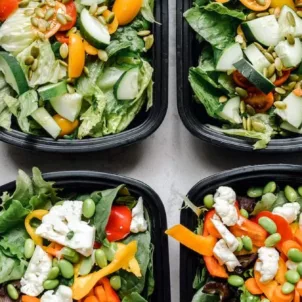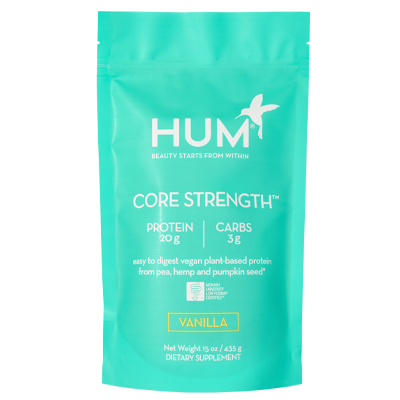You Might Not Be Eating Enough Protein—Here’s How to Squeeze More In
Wondering how to eat more protein? We spoke to experts to find out how to fit more of the essential nutrient into your diet—without overcomplicating meal time.
Whether you’re looking to lose weight, build muscle, or maintain good health, protein is essential for a healthy diet, no matter which way you cut it. According to a 2019 study in JAMA Network, which included over 43,000 American adults, about 42 percent of their calories came from low-quality carbohydrates, while only around 16 percent came from protein.
Although this number falls within the current USDA Dietary Guidelines for Americans, 2020-2025 (which state that 10 to 35 percent of your calories should come from protein) some people may need more in their diet. Depending on your physical activity level, age, fitness goals, and overall health, you might need to increase your protein intake.
So how do you know if you’re eating enough protein? Here, experts break down different protein needs and share tips on how to eat more protein.
How Much Protein Do You Need?
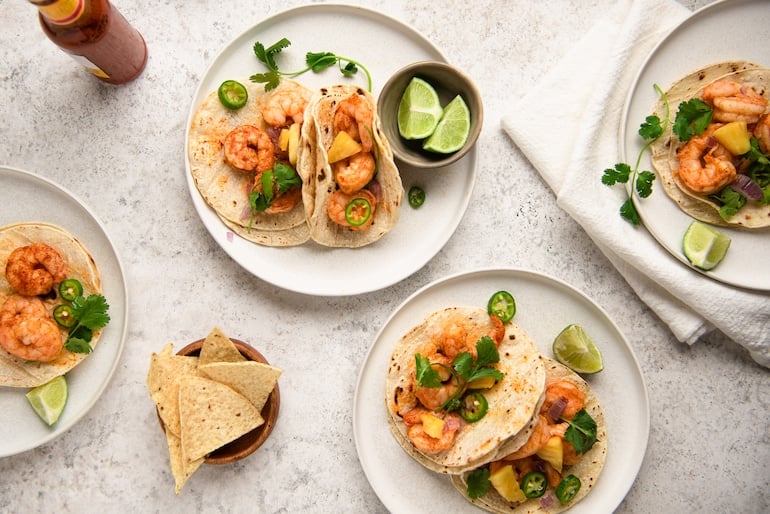
In order to keep your blood sugar levels stabilized, build or maintain muscle mass, and promote weight loss, general nutrition guidelines say you should aim to consume 0.4 grams of protein per kilogram of body weight at each meal, says Tia Glover, RD, creator of Taste It With Tia. So if you’re doing the math, that’s about 27 grams of protein per meal for a 150-pound person.
That said, some people need a little more protein than others.
Adults Over the Age of 65
For example, adults over the age of 65 need should try to get 1.2 to 2.0 grams of protein per kilogram of body weight daily to maintain muscle mass, Glover says. So if you weigh 150 pounds, you need to consume anywhere between 82 to 136 grams of protein daily.
Upping your protein as you age helps to combat age-related muscle loss, also known as sarcopenia. According to a 2014 review in Current Opinion in Rheumatology, research suggests that people start to lose muscle mass and strength as early as their 40s and can lose up to 50 percent by their 80s.
Menopausal Women
Women who are in menopause often don’t get enough protein, says Nicole Rodriguez, RDN, a registered dietitian, NASM-certified personal trainer, and co-founder of Step Bite Step. “This is problematic as the decrease in estrogen experienced during this time (and aging in general) leads to decreases in muscle mass,” she says.
Athletes or Highly-Active People
Similarly, if you’re an athlete or work out often, your protein needs are higher than the average person. You should also aim to get 1.2 to 2.0 grams of protein per kilogram of body weight daily to support muscle growth and recovery, per the Academy of Nutrition and Dietetics and the American College of Sports Medicine, Glover says.
Pregnant and Lactating Women
“Pregnant and lactating women require at least 71 grams of protein per day to help support the growth of the baby and production of breast milk,” Glover says.
The Benefits of Protein
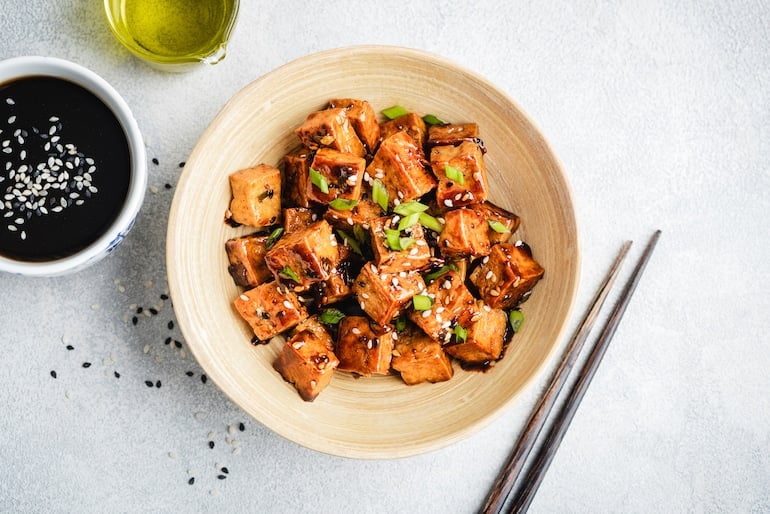
Completely cutting out or limiting protein from your diet can lead to devastating effects on your health. Concerned you’re not getting enough protein? These are just a few reasons you should consider upping your intake.
It Keeps You Fuller Longer
Protein curbs hunger because when it’s consumed, your body releases certain hormones and enzymes, which create a sensation of fullness, Glover says. So eating mediocre amounts of protein means you’re more likely to be hungry soon after your meal or snack and have cravings and less energy.
“The benefits of adding more lean sources of protein to your diet are plentiful. First, protein has a satiety factor, meaning that anchoring your plate with protein can help you feel fuller until your next meal,” Rodriguez says.
It Will Aid in Weight Loss
If you’re constantly hungry, it can make any weight loss efforts less sustainable. Consuming a high-protein diet that leaves you satisfied can result in easier weight loss, Glover says.
Not only does protein keep you fuller for longer (meaning less snacking and overeating in geeral) but protein also has the highest thermic effect of the three macronutrients (protein, carbohydrates, and fat), Rodriguez says. This means that your body requires more calories to break down protein than carbohydrates and fat.
“Your metabolism typically slows as you lose weight, so consuming a high-protein diet is important to help maintain your metabolic rate and prevent weight-loss plateaus,” Glover explains.
In fact, research shows that consuming a little more protein in your diet than what’s normally recommended may help with weight loss and prevent regaining the pounds.
A 2020 review in the Journal of Obesity & Metabolic Syndrome compared the effects of a high-protein diet with standard protein diet on weight loss. The standard protein diet group consumed 0.55 to 0.88 grams per kilogram of body weight daily (16 to 21 percent of total calorie intake), while those in the high-protein diet group consumed 1.07 to 1.60 grams of protein per kilogram of body weight daily (27 to 35 percent of total calorie intake).
People who followed a high-protein diet lost more body weight and fat mass and significantly increased fat-free mass and their resting energy expenditure than those who followed the standard protein diet.
It Helps Preserve and Build Muscle Mass
Weight loss pumps the breaks on your metabolism because of the loss of muscle mass. In order to keep your metabolism humming along and increase your calorie burn, you need to exercise more, according to the Mayo Clinic. That also means you need to consume more protein—because a high-protein diet helps preserve muscle mass as you lose weight. Protein also repairs muscles after exercise so they grow back bigger and stronger.
“This is especially important because muscle burns more calories than fat, so you want to maintain as much as possible during a fat-loss period,” Glover says.
How to Eat More Protein
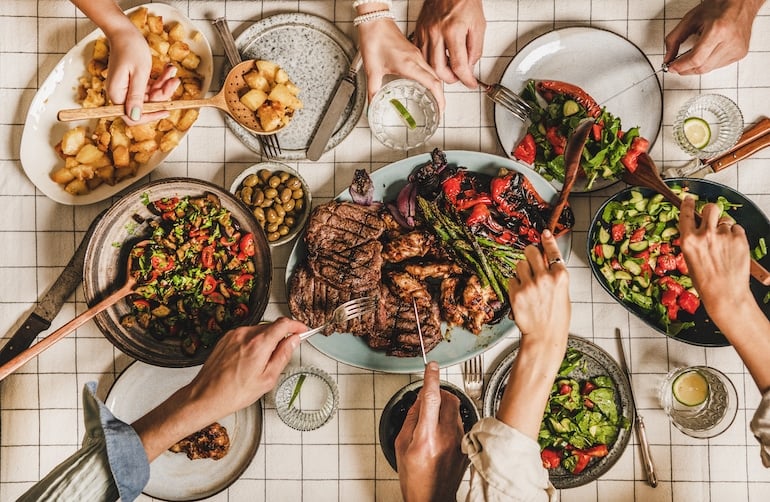
1. Find Your Protein Target
When setting your daily protein intake targets, Rodriguez suggests following the acceptable macronutrient distribution range (AMDR), which recommends that up to 35 percent of your daily total calories come from protein. If you’re older or an athlete, aim to consume 1.2 to 2.0 grams of protein per kilogram of body weight daily.
2. Divide Protein Across Meals and Snacks
Make sure you’re spreading out your protein intake throughout the day and not consuming too much in one meal. A 2018 review in the Journal of the International Society of Sports Nutrition found that by spreading out your protein intake to 0.4 grams per kilogram of body weight at each meal across four meals a day, your body can use the protein more efficiently.
For example, if you’re following a 2,000-calorie diet and the upper protein limit, then 700 of those calories would come from protein and if you divided that up between three meals and two snacks, you would consume around 35 grams of protein at each serving.
3. Choose Your Protein Sources Wisely
The bulk of your protein intake should ideally be derived from animal-based sources as they are the most bioavailable, and then fill in with plant-based sources as needed, Rodriguez says. Of course, if you’re following a vegan or vegetarian diet, there are plenty of healthy plant-based protein sources to choose from.
“Instead of looking for products with more protein, look at what you currently consume and add more of that protein to meet your goals,” she says. For example, if you’re eating chicken for dinner and aren’t meeting the allotted amount at that meal, simply eat a little more chicken.
Glover recommends sticking to leaner sources of protein, especially if you’re trying to lose weight. “This would include chicken breast, 93 percent lean ground beef, pork loin or seafood. Along with this, plant-based sources of protein, like beans and nuts and seeds, can be beneficial because they are high in fiber, which also increases satiety,” she says.
Some of the best animal-based sources of protein are:
- Cheese
- Eggs
- Beef
- Chicken
- Pork
- Turkey
- Fish
- Yogurt
The best plant-based proteins include:
- Tofu
- Tempeh
- Seitan
- Soy milk
- Beans
- Nuts and seeds
- Edamame
Whole food sources of protein are best, but if you need to supplement, Glover says you can use protein powders to help meet your daily intake. Here are some other quick and easy ways to squeeze in more protein in your diet from Glover and Rodriguez:
- Protein shake or smoothie: Try HUM Nutrition’s Core Strength, which has 20 grams of protein per serving from pea, hemp seed, and pumpkin seed
- Beef or turkey jerky
- Add hard-boiled eggs, beans, cheese, or canned tuna or salmon to your salads
- Spread nut butter on pancakes, waffles, toast or add to oats and yogurt and/or desserts
- Sprinkle roasted nuts and seeds, such as chia or flax seeds, to your salads, oatmeal, or yogurt
- Snack on steamed edamame
- Use cow’s milk or soy milk (which has a higher protein count than other plant-based milks)
- Incorporate beans to tacos, soups, and casseroles
4. Add Carbs and Fat
Although your goal is to increase your protein intake, remember that pairing protein with other macronutrients is the ultimate winning combo. Combining carbohydrates with protein and fat in your meals will help balance your blood sugar levels. “This will help slow the digestion of the carbohydrates, leading to balanced blood sugars. For example, instead of having an apple by itself, pair it with some almond butter and deli chicken breast,” Glover says.
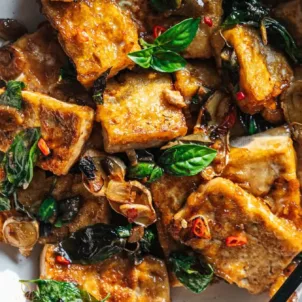
I’m an RD, and Here’s Why Everyone Should Be Eating More Tofu
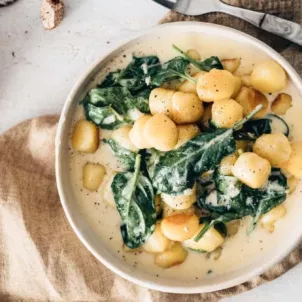
Shopping at Trader Joe’s? Stock Up on These 11 RD-Approved Frozen Foods
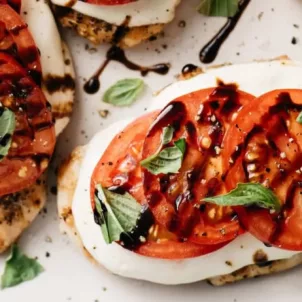
Reverse Dieting Can Help You Eat More Without Gaining Weight
